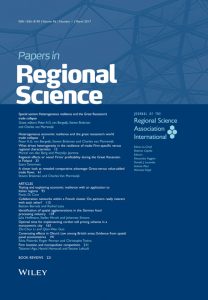A one-way ticket to Carbon Heaven, please?

Source: http://commons.wikimedia.org/wiki/File%3ACarbon_footprint_representation.jpg
I recently had my carbon footprint calculated over the phone with a member of an environmental NGO called the Surefoot Effect. It was an interesting experience.
The conversation was going well. I was asked questions about how I heat my flat (answer: I’ve never turned the heating on), how I commute to work (I cycle), how much meat I eat (I’m vegetarian) and my carbon footprint came in at roughly half the UK average, until I was asked about the topic I was dreading… how much I fly. Last year I took a series of long-haul flights, because I’d finished a job in South Korea, and on my way back to the UK I visited Malaysia and India as a tourist. These flights bumped up my carbon footprint considerably. Without flights, my carbon footprint was around 6 tonnes of carbon. With flights, my footprint was doubled to 12 tonnes, slightly more than the UK average. All my good, green work, it seemed, had been for nothing. I am just as much of a carbon terrorist as all my car-driving, meat-eating peers.
Flying is, by far, the most carbon intensive activity most people engage in. For example, a round-trip flight from London to New York is estimated to create around 2 tonnes of CO2 per passenger. That’s about 15% of your annual footprint gobbled up in less than twelve hours travel-time. And it’s more than the average Indian’s total annual footprint, a comparatively tiny 1.7 tonnes.
This creates an ethical dilemma for me, and I’m sure I am not alone. In almost every other aspect of life, whether it be transport, diet, or household energy, there is usually a ‘green option’ which we can choose to take. Is the green option for flying just… to not fly? According to the likes of environmentalist and Guardian columnist George Monbiot, the answer is a firm yes. Linking the fact that it is the richest people in the world who fly, and the poorest in the world who are most threatened by climate change, he argues that ‘we are all killers” in a characteristically provocative piece from 2006: “Flying kills. We all know it, and we all do it. And we won’t stop doing it until the government reverses its policy and starts closing the runways.”
So, what is an environmentally-minded person such as myself to do? Not flying is the most simple and obvious solution, but is this really viable? I have friends and family who live in different continents – can I never visit them? Am I to deny myself the possibility of travel, of seeing the wonders of the world and experiencing different cultures? Professionally, as an early-career researcher I know that University bosses evaluate academic staff, in part, by how many international conferences they attend. Am I to sacrifice my career prospects by only attending events I can reach by land or sea?
Carbon offsetting is one potential solution to this impasse. It has fallen off the radar somewhat in recent years, but in the mid-noughties it seemed to catch the imagination of academics, journalists and even rock stars (more on that later*).
The premise of carbon offsetting is that we firstly calculate the carbon produced by a passenger on a particular flight, we then attach a price to that carbon, and then we pay an offset company to perform an activity which reduces an equivalent amount of carbon elsewhere. If we take our return flight to New York, which produces about 2 tonnes of carbon, the price to offset it would be £40.34, using the offset company Myclimate and £51.94 using Atmosfair (I’ll explain why the prices are different later too**).
The offset companies then use this money to pay for projects which reduce carbon from the atmosphere – this could be planting trees, investing in renewable energy, destroying harmful chemicals, or in other more innovative ways. One particularly interesting project is using money from offsets to produce clean cooking-stoves to replace open-fires for cooking in the developing world. The clean cook-stoves not only reduce the need to chop down trees (they use about half as much firewood as open-fires) but they also stop children breathing in as much woodsmoke, and they create local jobs in cook-stove production. In fact, it’s projects like this which are becoming more popular, as they provide social, health and localised economic benefits to communities which are more tangible than rather abstract carbon reductions. Tree-planting might be simpler to understand and more iconic, but it’s actually not a very efficient way to reduce carbon from the atmosphere.

A woman cooking with a modern cookstove, funded through carbon offsets. Traditional cooking, using an open fire, is far more smokey and wood-intensive. Source: http://www.berkeley.edu/news2/2011/11/cookstove410.jpg
Which brings me to our rockstars*…
British rock band Coldplay tried to offset the emissions that had been caused in the production of their album ‘A Rush of Blood to the Head’, by planting 10,000 mango trees in southern India. The band’s fans were also encouraged to donate to the project. However, due to mismanagement very few of the trees were actually planted, little of the carbon reductions were realised, and a lot of the band’s and the fans’ money er… disappeared.

Coldplay tried to do their bit. Source: Karl Axon [GFDL (http://www.gnu.org/copyleft/fdl.html) or CC-BY-2.0 (http://creativecommons.org/licenses/by/2.0)], via Wikimedia Commons
And what about those different prices for the offsets**? Well, another complexity with emissions from air travel is that emissions created by aeroplanes at high-altitude are more damaging to the atmosphere then ground-based emissions. But the science on exactly how much more damaging is not clear. Some companies use a more conservative (and therefore more expensive) multiplier than others. Again, this confusion doesn’t help dispel anti-offset cynicism.
Even if carbon offsetting can be shown to be rigorous in its calculations and shown to be properly monitored, there is another, perhaps greater ethical issue: that it might just encourage customers to continue to fly, or even to fly more (the ‘rebound’ effect’). In a joint statement by the WWF, Friends of the Earth and Greenpeace, they give their support to carbon offsetting but only as a last resort – we should always try and reduce our emissions first. Similarly, the hierarchy endorsed by the UK Department of Energy and Climate Change “Calculate→Avoid→Reduce→Offset” reminds us that offsetting should never be our first choice.
A very funny satire on the concept of offsetting can be found on the Cheat Neutral website. It’s well worth a look, as it makes us wonder if carbon offsetting isn’t just a way to make ‘green’ people like me feel less guilty about flying; a cheap ticket to Carbon Heaven, if you like.
Finally, critics of offsetting argue that they distract from the larger-scale technical improvements and policy reforms which are required to make air travel more sustainable. There is a valid point here that radical action is needed to tackle our growing addiction to air travel, but as I’ve written in a previous blog, the aviation industry is unlikely to ‘go green’ within our lifetime, and offsets, for all their practical and ethical problems, give the conscientious traveller a means to take action here and now.




1728-4457/asset/PopulationCouncilLogo.jpg?v=1&s=03074651676b98d6b9d0ef1234bd48fe7ff937c3)

Motivation is what gets you started. Habit is what keeps you going. ~Jim Ryun